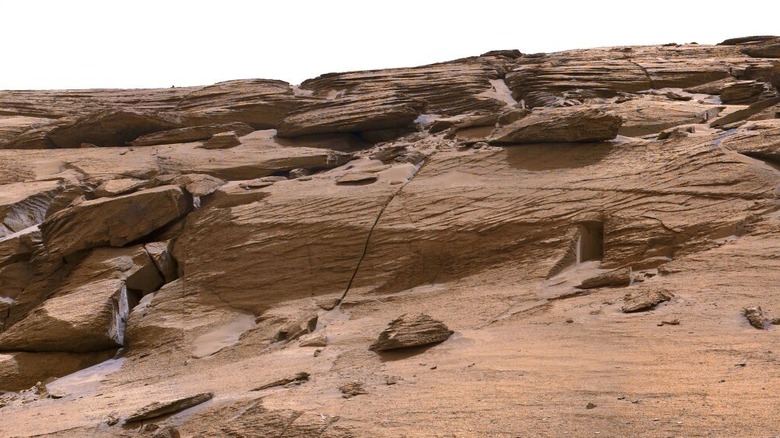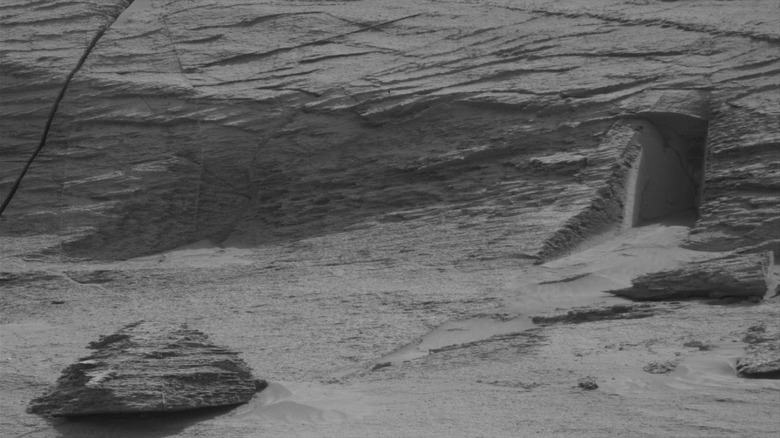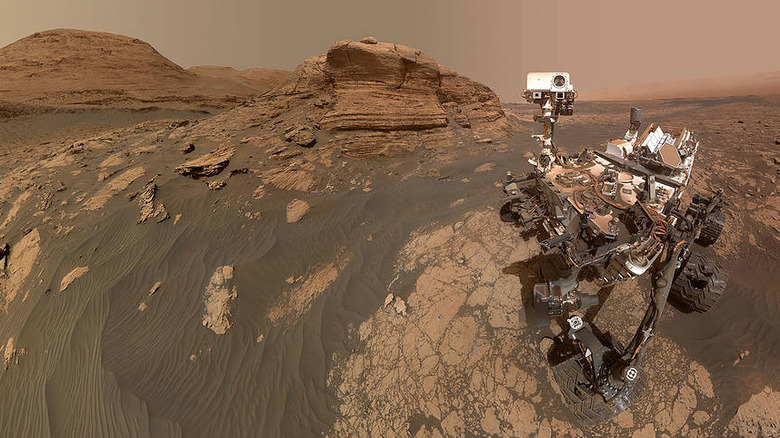Is This A Multiversal Doorway On Mars, Or Just A Fracture From A Quake?
A photograph taken by the Mars Curiosity rover has been creating quite a buzz on social media. Taken in May 2022, the photo in question appears to depict a perfectly carved doorway in the bedrock of Mars. It is not the first time strange-shaped rocks and soils on Mars have triggered the imagination of the people. In 1976, the NASA spacecraft Viking 1 took a photograph that revealed a rock formation resembling a human face on the surface of the Red Planet.
NASA scientists knew what they were looking at almost immediately. NASA explains it was just an illusion created by shadows and light playing over a type of massive rock commonly found in that region, which is called Cydonia. Since 1976, NASA orbiters and rovers have spotted all kinds of strange things on Mars: frog-shaped rocks, rare alien-looking metal formations, intriguing bedrock textures, and of course, the rocky face we mentioned at the outset. The newly discovered "doorway" on Mars led to discussions on sites like Reddit and was picked up by the international press, so naturally, NASA jumped in to clear up the mystery.
The doorway on the ancient lake of Gale Crater
NASA JPL told Snopes that the "doorway" was a very zoomed-in crevice on a rock that is part of a much larger landscape photographed by Curiosity's Mastcam. "The team's scientists underlined just how small [the crevice] is: roughly 30 centimeters wide and 45 centimeters across (11 by 17 inches)," a JPL spokesperson told Snopes via email.
"They [the scientific team] said there are linear fractures throughout this outcrop, and this is a location where several linear fractures happen to intersect," that JPL spokesperson added. NASA representatives provided Snopes with a large mosaic landscape photograph (created by Neville Thompson, not affiliated with NASA) that gives a better perception of the size of the supposed doorway on the Gale Crater.
Curiosity has been scouting Gale Crater since it landed in 2012. NASA explains that about 3.5 to 3.8 billion years ago, a meteor hit the Red Planet, violently shaping the crater. Scientists believe that water may have been present in the crater in the distant past. For this reason, it was identified as a location of high scientific interest. Curiosity has been searching for clues as to whether Gale Crater ever met the environmental requirements to support life. In May 2022, Curiosity began to slowly approach and climb Aeolis Mons, also known as "Mount Sharp." Mount Sharp is the highest elevation found in the center of the crater, rising an intimidating 18,000 feet (that's more than 14 Empire State buildings stacked on top of each other).
Why do humans see patterns and faces where they aren't
Humans are hot-wired to detect patterns, faces, and objects. Seeing a familiar object or face that is not actually there is known as "pareidolia," per Cambridge Dictionary. In 2021, the Chinese lunar rover spotted a strange rock on the Moon that looked like a "moon-hut" on the distant horizon. Months later, it was determined that what the rover photographed was just an irregularly-shaped rock – and just another case of pareidolia. As Live Science notes, Carl Sagan described pareidolia as an essential survival tool that allows humans to rapidly recognize things in the distance. Psychologists use pareidolia in tests like the Rorschach inkblot test, showing abstract images to patients to gain insight into their state of mind.
Gale Crater on Mars is the perfect place for pareidolia. The region, especially near mount Aeolis Mons is rich in geological features, like exposed bedrock with fractures, cracks, crevices, and other irregularities. These irregularities are caused by natural erosion, dust storms, weather, and even marsquakes measured by the InSight lander.


